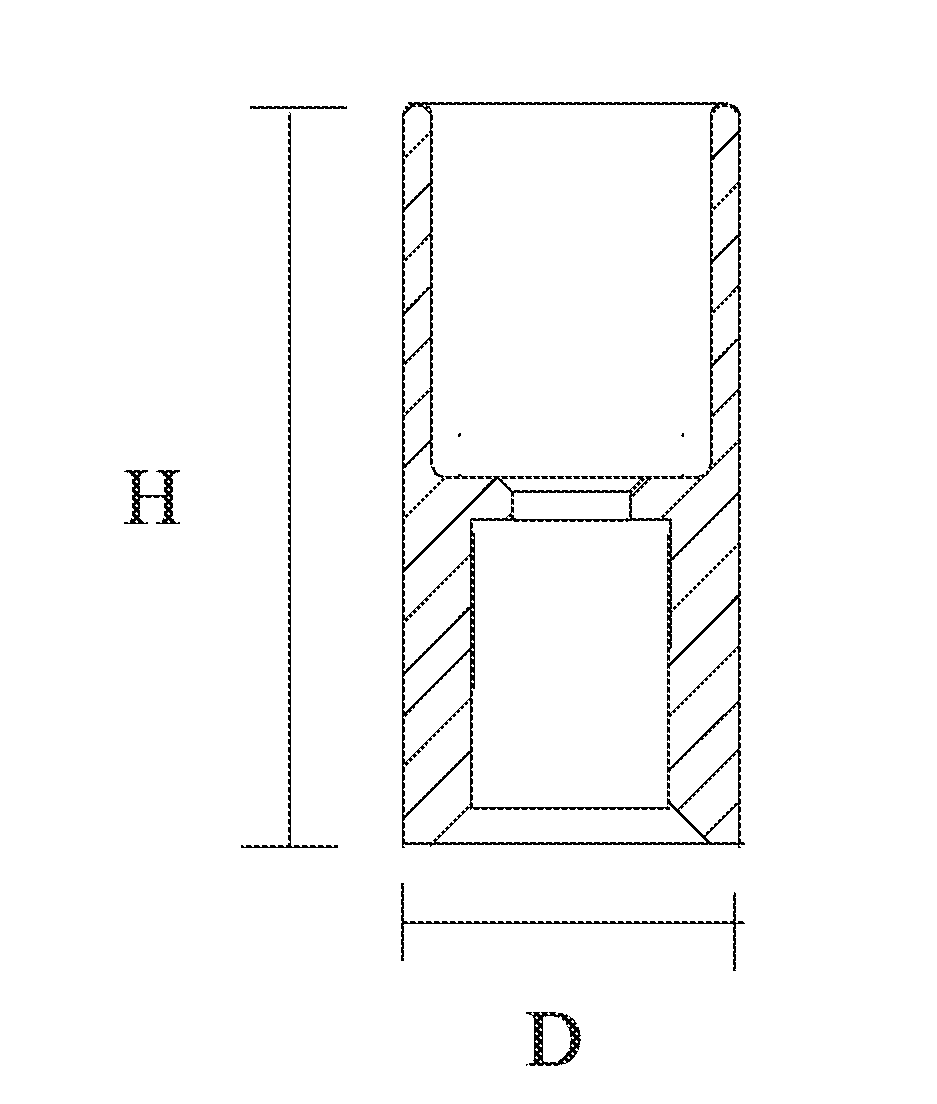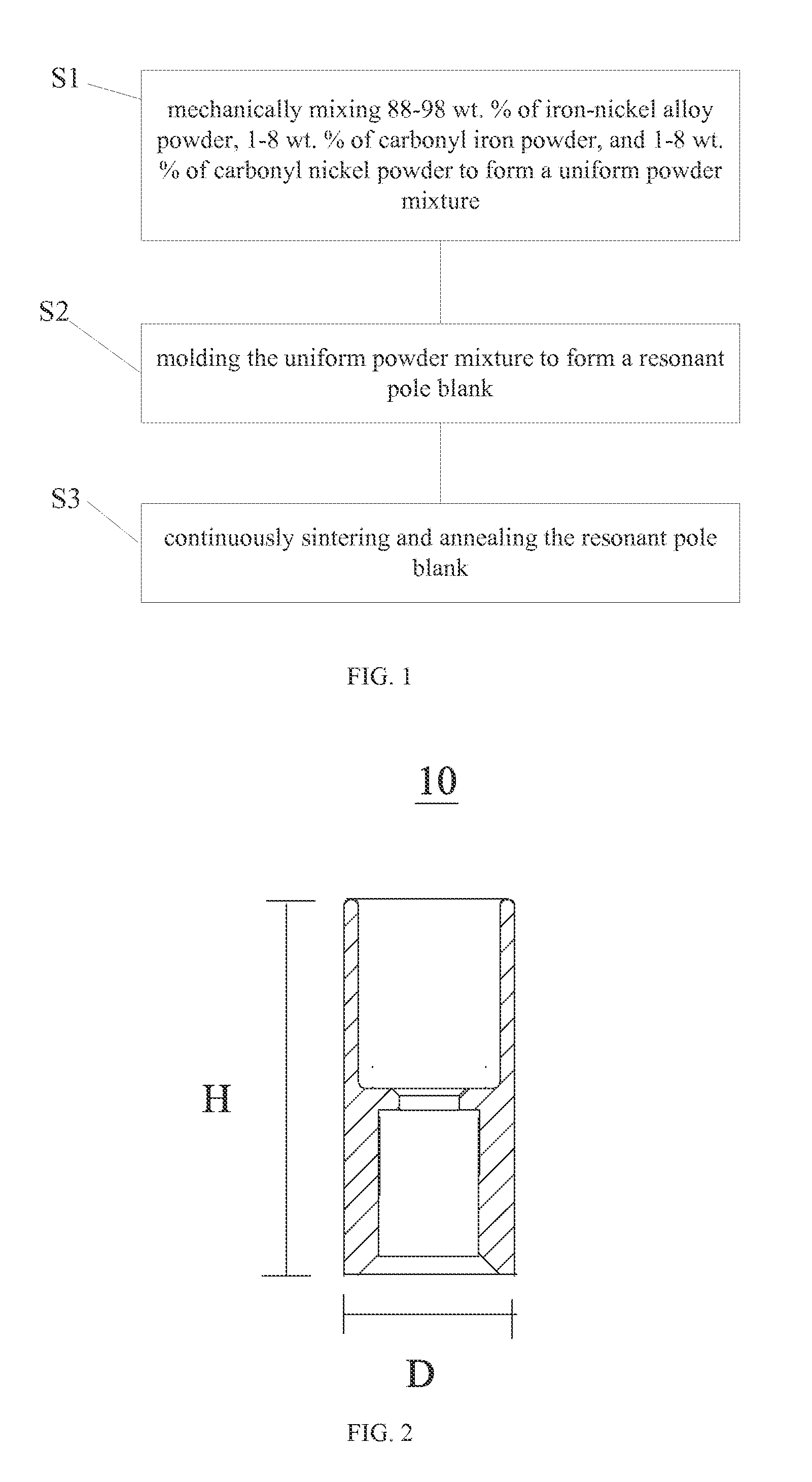Method for Manufacturing Resonant Tube, Resonant Tube and Cavity Filter
- Summary
- Abstract
- Description
- Claims
- Application Information
AI Technical Summary
Benefits of technology
Problems solved by technology
Method used
Image
Examples
embodiment i
[0035]A method for manufacturing a resonant pole as shown in FIG. 1 is provided, which comprises:
[0036]Step S1: Mechanically Mixing 88-98 wt. % of Iron-Nickel Alloy Powder, 1-8 wt. % of Carbonyl Iron Powder, and 1-8 wt. % of Carbonyl Nickel Powder to Form a Uniform Powder Mixture;
[0037]In this embodiment, the iron-nickel alloy powder is preferably 92-96 wt. %; the carbonyl iron powder is preferably 2-4 wt. %; and the carbonyl nickel powder is preferably 2-4 wt. %. In the most preferred aspect, the iron-nickel alloy powder is 94 wt. %; the carbonyl iron powder is 3 wt. %; and the carbonyl nickel powder is 3 wt. %. It bears mentioning that these raw materials inevitably comprise a small amount of impurities, including carbon, nitrogen, sulfur and phosphor, which generally are not more than 0.1%.
[0038]In this embodiment, the iron-nickel alloy powder, the carbonyl iron powder, and the carbonyl nickel powder are uniformly and mechanically mixed with a stearic acid lubricant which takes u...
application embodiment 1
[0057]88% of high purity iron-nickel alloy powder, 6% of carbonyl iron powder, 6% of carbonyl nickel powder, which are prepared using powder metallurgical technology, and a stearic acid lubricant occupying 1-2% of the total weight of the aforesaid powders, are press molded in one step. The press molded product is then subjected to a continuous sintering process (under the highest temperature of 1450° C. for 10 hours) and an annealing process under the reducing atmosphere of H2 (under the temperature of 1150° C. for 12 hours). Thereafter, an electroplating process is carried out to obtain an iron-nickel resonant pole having an outer diameter of 10.0 mm, and a highness of 11.8 mm. It is observed from testing that the corresponding cavity filter with a single cavity has a resonant frequency up to 2900 MHz, and a temperature drift lower than 0.32 MHz.
embodiment ii
[0058]A resonant pole 10 having a structure as shown in FIG. 2 is provided in this embodiment, which has a highness of H and an outer diameter of D. Resonant pole 10 comprises 88-98 wt. % of iron-nickel alloy, 1-8 wt. % of carbonyl iron, and 1-8 wt. % of carbonyl nickel.
[0059]In this embodiment, the iron-nickel alloy, the carbonyl iron, and the carbonyl nickel are press molded or injection molded to form a resonant pole.
[0060]The resonant pole prepared from the iron-nickel alloy, the carbonyl iron, and the carbonyl nickel mixed in the aforesaid ratios using one-step molding significantly reduces consumption of raw materials and the cost in mechanical processing.
[0061]In this embodiment, preferably, the iron-nickel alloy is of 92-96 wt. %, the carbonyl iron of 2-4 wt. %, and the carbonyl nickel of 2-4 wt. %. In the most preferred embodiment, the iron-nickel alloy is of 94 wt. %, the carbonyl iron of 3 wt. %, and the carbonyl nickel of 3 wt. %.
[0062]According to a further embodiment o...
PUM
| Property | Measurement | Unit |
|---|---|---|
| Temperature | aaaaa | aaaaa |
| Temperature | aaaaa | aaaaa |
| Temperature | aaaaa | aaaaa |
Abstract
Description
Claims
Application Information
 Login to View More
Login to View More - R&D
- Intellectual Property
- Life Sciences
- Materials
- Tech Scout
- Unparalleled Data Quality
- Higher Quality Content
- 60% Fewer Hallucinations
Browse by: Latest US Patents, China's latest patents, Technical Efficacy Thesaurus, Application Domain, Technology Topic, Popular Technical Reports.
© 2025 PatSnap. All rights reserved.Legal|Privacy policy|Modern Slavery Act Transparency Statement|Sitemap|About US| Contact US: help@patsnap.com



